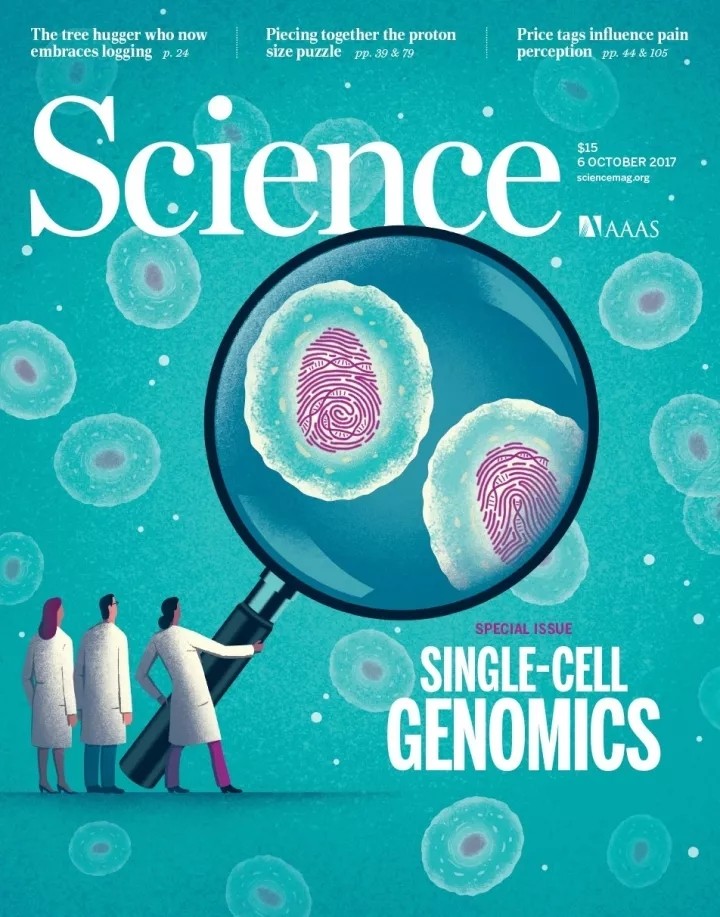Science封面:Single-cell Genomics
本期《科学》(Science)杂志的封面特刊聚焦单细胞基因组学(Single-cell Genomics),从单细胞组学水平畅谈了人类对免疫系统和脑神经系统的新认识,以及单细胞表观遗传学的新进展,并对“人类细胞图谱”计划寄以厚望。

Single-cell transcriptomics to explore the immune system in health and disease
Michael J. T. Stubbington, Orit Rozenblatt-Rosen, Aviv Regev, Sarah A. Teichmann
Abstract
The immune system varies in cell types, states, and locations. The complex networks, interactions, and responses of immune cells produce diverse cellular ecosystems composed of multiple cell types, accompanied by genetic diversity in antigen receptors. Within this ecosystem, innate and adaptive immune cells maintain and protect tissue function, integrity, and homeostasis upon changes in functional demands and diverse insults. Characterizing this inherent complexity requires studies at single-cell resolution. Recent advances such as massively parallel single-cell RNA sequencing and sophisticated computational methods are catalyzing a revolution in our understanding of immunology. Here we provide an overview of the state of single-cell genomics methods and an outlook on the use of single-cell techniques to decipher the adaptive and innate components of immunity.
The promise of spatial transcriptomics for neuroscience in the era of molecular cell typing
Ed Lein, Lars E. Borm, Sten Linnarsson
Abstract
The stereotyped spatial architecture of the brain is both beautiful and fundamentally related to its function, extending from gross morphology to individual neuron types, where soma position, dendritic architecture, and axonal projections determine their roles in functional circuitry. Our understanding of the cell types that make up the brain is rapidly accelerating, driven in particular by recent advances in single-cell transcriptomics. However, understanding brain function, development, and disease will require linking molecular cell types to morphological, physiological, and behavioral correlates. Emerging spatially resolved transcriptomic methods promise to fill this gap by localizing molecularly defined cell types in tissues, with simultaneous detection of morphology, activity, or connectivity. Here, we review the requirements for spatial transcriptomic methods toward these goals, consider the challenges ahead, and describe promising applications.
Single-cell epigenomics: Recording the past and predicting the future
Gavin Kelsey, Oliver Stegle, Wolf Reik
Abstract
Single-cell multi-omics has recently emerged as a powerful technology by which different layers of genomic output—and hence cell identity and function—can be recorded simultaneously. Integrating various components of the epigenome into multi-omics measurements allows for studying cellular heterogeneity at different time scales and for discovering new layers of molecular connectivity between the genome and its functional output. Measurements that are increasingly available range from those that identify transcription factor occupancy and initiation of transcription to long-lasting and heritable epigenetic marks such as DNA methylation. Together with techniques in which cell lineage is recorded, this multilayered information will provide insights into a cell’s past history and its future potential. This will allow new levels of understanding of cell fate decisions, identity, and function in normal development, physiology, and disease.


